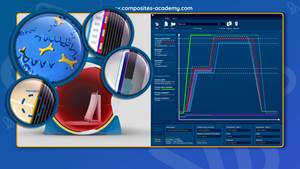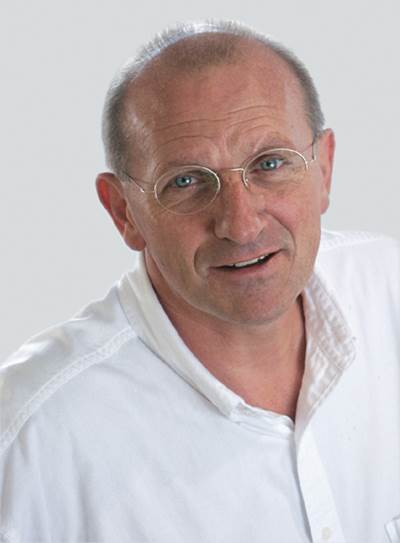The state of education in the composites trade, part I
Andre Cocquyt (GRPguru, Brunswick, Maine) renews his call to focus composites industry efforts on finishing and financing a comprehensive unitary composites education model at the national level.
Share
Read Next
Education is a frequent topic of political discussion these days, but I am not sure how much such talk will benefit the composites industry. Or perhaps I should say the composites trade, meaning the part that deals with the actual manufacturing of all things composite.
I usually enjoy Andy Rooney’s curmudgeonly closing comments on CBS’ 60 Minutes, but his reaction to recent letters that followed his commentary on unemployment put into sharp relief one reason why I’m unsure: “People don’t go to school to learn how to make things,” he declared. “They go to school to get educated.” This implied dichotomy between the theoretical and the practical, the academic and vocational, “book learning” and “making things” is a common misunderstanding of education, and one that, in the composites trade, where our goal is to use very complex materials and processes to make things, still frustrates efforts to build a consensus about what composites education ought to be.
I have spent better than 20 years pushing what I thought of as “education” in composites: A classroom component coupled with a laboratory experience, where you actually do what you’ve only read about and talked about in class. To learn how to make things that will not break or fail under normal or extreme loads, one needs to understand the basic science. The relevant laws of physics, reduced to their simplest components, help take the black magic out of composites manufacturing — it is not necessary, for example, to be able to write out the complete formula for Young’s modulus. But I always assumed these classroom sessions were a most relevant addition to, not an alternative to, the hands-on portion of my courses.
I thought for a while that the American Composites Manufacturers Assn.’s (ACMA) CCT program was going to achieve what I have always hoped for by setting the foundation for a generic, standardized, nationwide composites education. But I may have had it wrong all along. That program’s champion of many years, Bob Lacovara, is no longer with ACMA. Now a consultant, he has apparently given up on the generic education concept. Or maybe it is a case of simple economics: Out of a job, he has signed on with the International Yacht Restoration School (IYRS, Newport, R.I.) to develop a custom composites curriculum. IYRS is a classy outfit, and it has done a great job starting several wooden boatbuilding courses. It’s well sponsored, so that should help with its composites program’s quality. But IYRS is only one of a number of organizations now scrambling to get a piece of the composites education pie. This group includes The Landing School, The Eastport Boat School and other boatbuilding schools that, five years or so ago, were still staunchly insisting that nothing but wood was suitable for building yachts.
Why the sudden interest in composites? Because now there is a significant pie. There wasn’t 10 years ago, when a large group of composites professionals, vendors, teachers, educators and volunteers worked on creating and shaping a framework for a national Composites Science program. They sought to provide curricula for every grade, from high school through affordable community college as well as post-high school evening classes and short topic-oriented courses. And they tried to generate interest in two- and four-year degree programs.
One former wood-boat school, which shall remain nameless, actually promised in its launch press release that it would develop a “new” composites technical program, touted as “the first of its kind in the rapidly growing composites field” [italics mine]. Ironically, this school had previously picked my brain for a few months about how a composites program might be structured and asked me several times to meet with them. The school also sent its program director to the Maine Advanced Technology Center at Southern Maine Community College (Brunswick, Maine) to see how things were done in our U.S. Department of Labor-sponsored program. And when I was talking to Mike Hoke, president of Abaris Resources Inc. (Reno, Nev.), for this article, he mentioned that said director had just visited Abaris to pick their brains. In other industries, that might be considered snooping, but hey, we are a generous bunch and share information freely.
The program does get credit for one “first”: the claim, in the same press release, that “the high strength-to-weight ratio of composite materials pioneered by boatbuilders is now in demand by many industries, including wind energy, aerospace and transportation” [italics mine]. Here I thought all these years that this stuff was pioneered by the aerospace guys! I haven’t heard many great boatbuilder-turned-wind-blade-manufacturer success stories. The precision now required to manufacture wind blades is much closer to that required in aerospace applications. Turning at 12 to 20 rpm, large blades have tip speeds of approximately 180 mph/290 kmh and, in one rotation (every three to five seconds), undergo cyclic loading that consists of a mix of torque, tension and compression — a complex of stress loads that it will have to endure without failure during an expected 20-year life cycle. That doesn’t sound like something for which boatbuilding skills would be sufficient!
Am I picking on boatbuilding schools? You could read it that way, but that is not my intent. These programs are part of a new trend in composites education. An increasing number of private schools offer “original” year-long classroom curricula — fully accredited — for a mere $20,000 to $30,000 in tuition. Now, I suppose that fits Rooney’s description of education. But where does that leave the not-so-elite rest of the composites workforce?
These latecomers are even qualifying for government funding based on ... what? Expertise? Track record? Maybe all it takes is a well-written course outline — cherry-picked from existing successful initiatives (Abaris, MATC, and ACMA’s CCT program, for example) — and the proper contacts to get the programs “accredited.” What I do know is that in the first year that a 10-month composites program was offered at one of these schools, several students bailed out and demanded a tuition refund because they were totally dissatisfied with the quality of the “education.”
And that is my beef. Before we let late-arrivers get a free ride on all the work that was done by dedicated composites professionals in the past decade while they were chiseling and caulking, we need to focus all our efforts on finishing and financing that unitary composites education model. We need that model and we need a comprehensive approach to it at the national level. We need to support a pool of educators to continue the development of curricula. We need educators who possess the many years of hands-on experience that are prerequisite to teaching all aspects of one of the world’s most complex trades. And we need this pool of educators to train the trainers who will teach standard curricula as the composites trade grows and matures.
So … how are we doing with this task? Unfortunately, not so well. Despite the best efforts of many, the industry is not yet prepared to unite behind a comprehensive effort. We’ll address this lack at length in Part II, but for now, one example, again from the marine industry, must suffice to illustrate the current state of affairs.
The American Boat and Yacht Council (ABYC, Annapolis, Md.) has done a great job creating standards in a number of areas of boatbuilding. These standards are gaining recognition in much of the world. In June 2008, ABYC’s curriculum designer Ed Sherman asked me to collaborate with him on the development of a composites curriculum and certification for ABYC. Long story short, I made the case against such an effort because we have a number of competing marine trade associations and each serves only a portion the overall marine market. I argued that there was no rationale for separate curricula for the same technologies in different fields within the composites industry.
I seemed to have found a willing ear — the top brass and key staff from ACMA and ABYC agreed to meet with me in Bristol, R.I., on July 28, 2008. The consensus at that meeting was that it made no economic sense to have separate curricula, testing and certification, and that a national standard was the way to go, either branded separately (with each organization using the same standard under its own logo) or with some sort of franchise system. But as the recession deepened, the individual interests of the participants took precedence, the concept disintegrated, and we are now obviously on track for separate and incompatible courses and certifications.
In Part II, we’ll examine why, despite the disappointing trend toward educational disunity, the composites trade’s need for national standardization and certification is an absolute necessity.
Related Content
Zeiss, Imperial College London summer school enhances materials, sustainability learning
Twenty-four next-generation students attended the Imperial College London this August to advance their scientific knowledge, with workshops, lectures, activities and a composites competition.
Read MoreDaher inaugurates Learning Center for training aeronautical talent
Daher offers a concrete solution to the shortage of qualified professionals in aerospace, providing a range of technical programs that prepare workers for the sector’s rigorous demands.
Read MoreNew online training course targets prepreg basics
JEC World 2024: Composites Expert highlights how its E-Learning Composites Academy platform supports flexible industry learning with new courses developed with Stelia Aerospace North America.
Read MoreFACC Academy begins training, onboarding operations
FACC’s newly launched training platform will address skilled aerospace worker shortages head on, offering more than 250 specialized training courses for its entire workforce.
Read MoreRead Next
Composites: Past, Present and Future: Marine Composites Training and Education, Part I
In Part I of a series about the past, present and future of training in marine composites, Andre Cocquyt outlines the historical difficulty composites manufacturers have had in finding qualified technicians, and how that reality led to his involvement in the development of training programs.
Read MoreComposites: Past, Present and Future: Marine Composites Training and Education, Part III
In Parts 1 and 2, Andre Cocquyt outlined the difficulty that composites manufacturers have faced in finding skilled employees and described a transferable model for local/regional training programs. In Part 3, he discusses the critical issue of program funding.
Read MoreComposites: Past, Present and Future: Marine Composites Training and Education, Part II
Last issue, in Part I, Andre Cocquyt identified the dire need for technical training in marine composites. In Part 2, he outlines a plan that could meet that need.
Read More
















